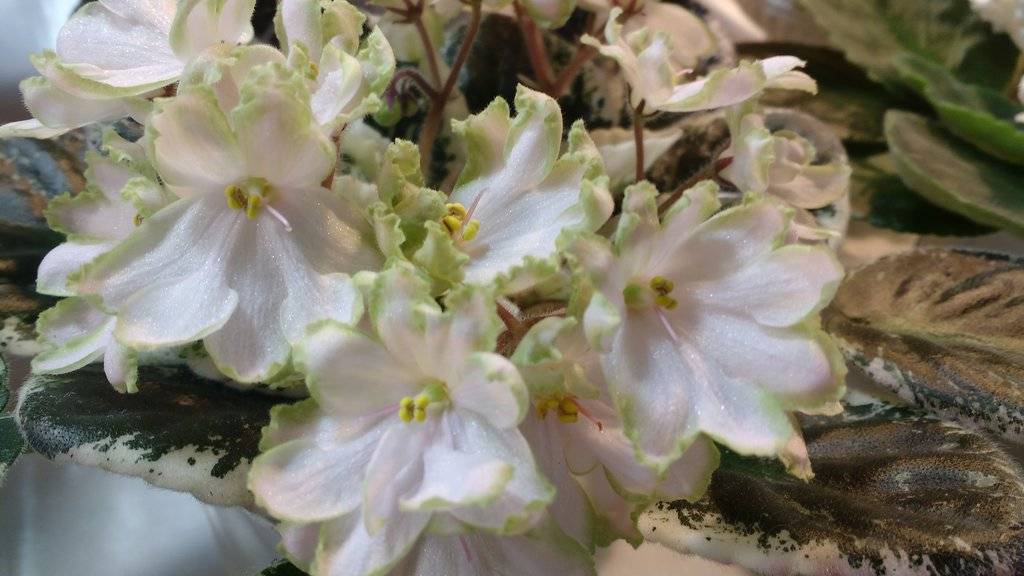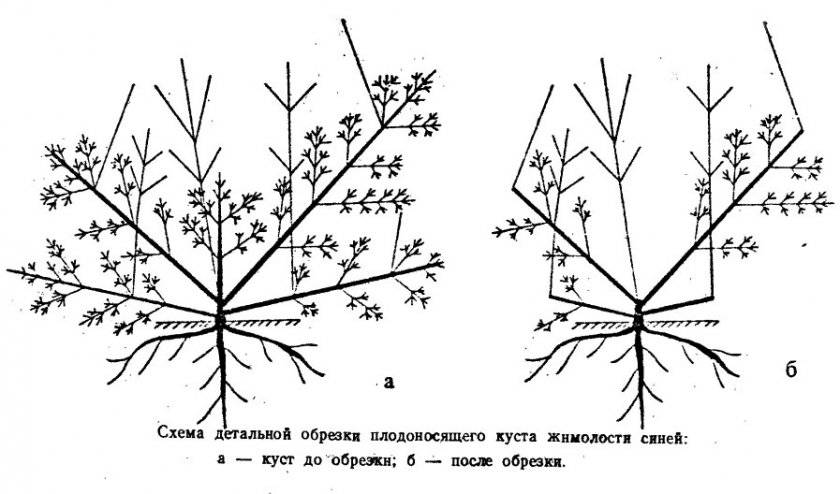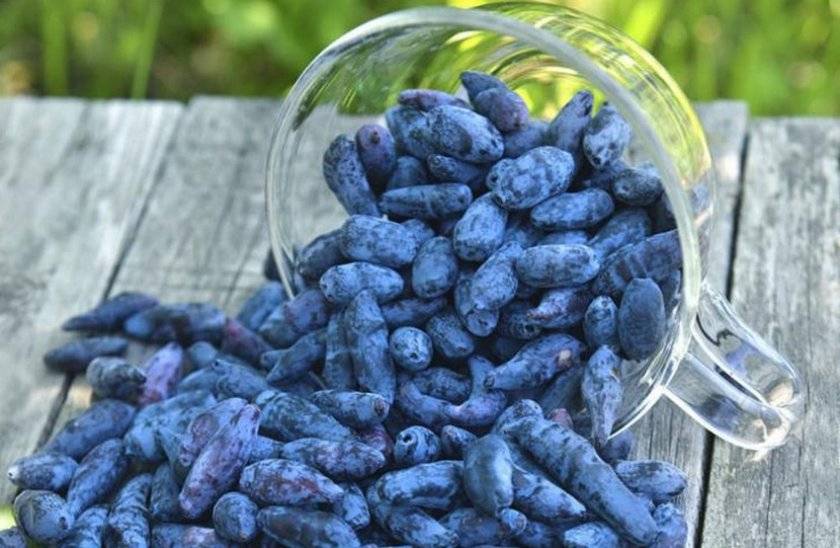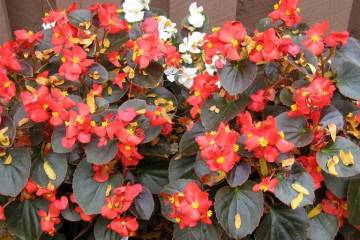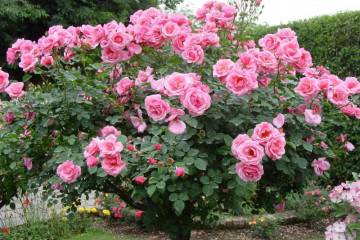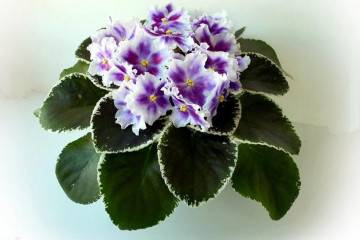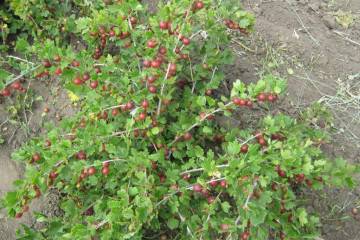Honeysuckle "Violet" - features of cultivation
Content:
The assortment of fruit shrubs, every year delighting summer residents with an abundant tasty harvest, is regularly replenished with new varieties. Honeysuckle of the Violet variety is not a newcomer to the market; it has been successfully grown in Russia and the CIS countries for over 20 years.
What does violet honeysuckle look like, which family does it belong to?
The name Violet perfectly characterizes the rich purple hue of the berries. But the beauty is not limited to the attractiveness of the crop, the crown of the shrub is highly decorative.
Honeysuckle Violet: variety description
The rounded crown reaches a height of 1.3-1.5 m. The leaves are oval, dark green, tightly attached to the brownish-gray thick pubescent branches. The variety is self-fertile and needs pollinators. The flowers are greenish-white with yellow stamens (up to 2 cm in diameter). Fruit ripening occurs at the end of May - beginning of June.
The yield of adult bushes is 2.5 kg each, usually honeysuckle gives it for 2-3 years after planting. The keeping quality of the fruit is high, it is perfectly stored and suitable for long-distance transportation. Frost resistance - up to -23 ° С. The variety is resistant to diseases and pests. In calm weather, the berries hang on the branches before harvesting, but strong winds can shake ripe berries off the branches.
Briefly about the history of appearance
The author of the variety is the Pavlovsk Experimental Station in the Leningrad Region. The data on Violet's honeysuckle (lat.Lonicera caerulea L.) were entered into the state register on 12.24.1991. Approved for cultivation in all regions. The selection basis was the blue honeysuckle variety Roxana. The first ready-for-sale seedlings were grown in the Kharkiv region at the Institute of Horticulture UAAS.
Habitat
The variety winters well without shelter in the middle zone of the Russian Federation and in all more southern regions. With the obligatory shelter for the winter, it can be grown in regions with winter temperatures down to -35 ° C.
Briefly about the type of violets Japanese honeysuckle
Flower growers are well aware of the beautiful variety of the uzambara room violet (saintpaulia) called Japanese honeysuckle. It was bred by the breeder Elena Lebetskaya from Vinnitsa, so it appears in store catalogs under the label "LE-Japanese Honeysuckle".
It blooms almost continuously with white flowers with a slightly noticeable pink color, with a green border around the edges of the petals. The variety is variegated, the leaves are colored dark green, pink and light green. For this changeability, the name is given to the type of honeysuckle that grows in Japan.
Features of caring for honeysuckle at home
Honeysuckle is an open field shrub, it is not planted in indoor conditions and greenhouses, since the key condition for successful fruiting is cross-pollination. Gardeners plant several related varieties side by side to ensure a high yield.
Watering
Prefers regular, but not excessive soil moisture. If it rains once a week, then watering is not required, and in a drought, 10 liters of water are poured under each bush once a week.
Spraying
Bushes do not need sprinkling. This leads to an increased risk of fungal diseases. Spraying is carried out only to protect against diseases and pests with fungicides and insecticides before flowering and after harvesting.
Humidity
The crop is not sensitive to low air humidity, but in very dry climates, yields can decrease due to the decrease in the size of the berries. It is not recommended to plant honeysuckle in low-lying damp areas, as its roots do not tolerate waterlogging well.
Priming
Since the bush will grow in one place for at least 25 years, they carefully approach the preparation of the soil. The permissible groundwater height is 1.5 m and deeper. The optimum acid-base reaction of the soil is neutral (pH = 5.5-6.0). Black earth and loam are best suited.
Top dressing
Every year, watering is carried out once with a solution of wood ash (1 kg of ash per 10 liters of water). In the first 2 years after planting, no additional feeding is needed, fertilizers are applied from the 3rd year.
In the spring, they are fed with urea (1 tbsp. L. Per 10 liters of water), adding it simultaneously with watering. In May, the bushes are sprinkled with humus, rotted manure or compost. In July, after harvesting, nitroammofoska is introduced (20 g per 10 liters of water). In the autumn at the beginning of September, organic feeding is repeated, adding 40 g of superphosphate to humus for each bush.
Pruning
It is impossible to carry out radical pruning of young bushes, as this negatively affects fruiting.
Formative pruning is performed for the first time 6 years after planting. In the future, only a rejuvenating procedure is performed every 2-3 years. Only dry and damaged branches are removed, as well as the lowest ones - barren. A properly formed crown usually has 5 main branches.
Landings over 20 years old - rejuvenate. This has been happening for several years. All the oldest branches are gradually cut out, replacing them with a young growth. The process is complex, so in large gardens, young seedlings are planted instead, gradually removing the oldest bushes.
When and how honeysuckle variety Violet blooms
The shrub is distinguished by early flowering, which usually occurs in early May or late April. The pleasant scent attracts a large number of bees and bumblebees.
Flower shape
Single flowers on individual pedicels are usually formed in the lower pairs of leaf axils on annual shoots. Corollas are greenish-yellow, bell-shaped (up to 2 cm in diameter). The stamens are yellow. Subulate green bracts may even be longer than the calyx.
Flowering period
It usually lasts 10-14 days. The duration depends on the weather conditions. After successful pollination, each flower quickly withers, its corolla falls off, leaving an ovary.
Honeysuckle fruit
After pollination, the fruits are tied - always solitary, located on short stalks. After ripening, the berries are easily separated without damage (dry separation).
Fruit characteristics
The shape of the berries with a blue-violet lumpy skin with a bluish bloom is jug-like or spindle-shaped, elongated. The weight of the berries is 1-1.5 g each, and their length is up to 3 cm. The taste is sweet and sour or sweet (tasting rating is 4.5 points), the aroma is noticeable and pleasant.
What are the benefits of berries and how they are used
The use of the harvest is very different: the berries are consumed fresh, from which jam, compotes, and jams are made. A good berry for fillings. If the harvest is large, you can dry or freeze part of it. The health benefits of honeysuckle are great.
Healing properties are known:
- Normalizes the work of the digestive tract, heart, blood vessels, and the genitourinary system.
- It has a positive effect on visual acuity.
- Boosts immunity.
- Improves resistance to adverse environmental factors.
- It has a wound healing effect.
- Normalizes blood pressure.
Harvesting
The berries ripen unscathed, harvesting can take a month from the beginning of June. As soon as it is fully ripe, the honeysuckle begins to crumble, so it is usually harvested a little unripe.
Features of growing honeysuckle
For planting, two-year-old seedlings with 2-3 branches no higher than 40 cm with strong buds are suitable. Planting material is bought in nurseries, giving preference to specimens with a closed root system.
Planting bushes
Planting is carried out in a hole with a thin layer of drainage at the bottom of fine gravel and sand, sprinkling the roots with soil, abundantly mixed with humus. The root collar is buried 3-5 cm.The optimal distance between the bushes is 1-1.5 m.
Pollination
Since the culture is self-fertile, it definitely needs neighbors of the exact same variety or others related to the culture of blue honeysuckle (lat.Lonicera caerulea). The distance between the bushes is no more than 1.5 m.
Possible problems in growing honeysuckle
If the bush does not bear fruit, this indicates the absence of cross-pollination. It is necessary to plant several bushes of different varieties of blue honeysuckle nearby. Another likely reason for the lack of fruiting is incorrect pruning, since only annual shoots are blooming.
Advantages and disadvantages of the variety
Among the pluses of the Violet variety:
- yield - up to 2.5 kg per bush;
- frost resistance (up to -23 ° С);
- unpretentiousness to care;
- drought resistance.
Disadvantage - the neighborhood with other honeysuckle bushes is required.
Diseases
Common diseases: cercosporiasis, ramulariasis, powdery mildew, speckled leaves. For prevention, you should burn the fallen leaves in the fall, and in the spring, before the buds dissolve, spray the bushes with Bordeaux liquid.
Pests
Common pests:
- honeysuckle aphid,
- false shield,
- ticks,
- leaf-eating caterpillars.
Treatment with Confidor, Iskra, Actellik helps.
Other problems
In the first 3-4 years, the shrub is characterized by slow growth, therefore, during this period it is extremely important to prevent branches from breaking. It is advisable to protect the crown for the winter with a shelter to prevent damage from snow and wind.
Violet honeysuckle is a plentifully fruiting shrub that looks beautiful and pleases every year with an increasing harvest. Among others, deserves a high rating for the pleasant taste and aroma of dark purple berries.


